With its iPhone 6s Plus, Apple delivers once again superb camera performance, without compromising on the form factor, in one of the slimmest smartphone on the market. Compared to its previous version, the iSight camera of the latest iPhone manages to improve image quality while packing in more pixels without increasing the size of its sensor.
In spite of the larger body the iPhone 6s Plus adopts a similar but not identical camera module with the same size 1/3” type sensor. The module differs with an optical image stabilizer for stills and video.
From our combination of lab and real world tests the iPhone 6s Plus realized a DxOMark score of 84 points. Not only is it that an improvement on the iPhone 6s, it is in fact the best performing Apple iPhone ever!
Photos
For photos, the 6S Plus brings an interesting addition of detail.
Like its sibling, the iPhone 6s Plus achieved a great balance of performance, with strong results for exposure and contrast, autofocus, control of artifacts, and color, helping it achieve an impressive Mobile Photo score of 84 points.
The finest detail ever achieved by an iPhone
The iPhone 6s Plus has a very good level of detail in bright light and has low levels of chroma noise. Chroma noise is successfully removed, even if some luminance noise remains visible. This fine-grained noise is also visible in daylight scenes in uniform areas such as skies.
Exposure and Color: Great HDR and vivid colors
From our tests, images from the iPhone 6s Plus are well-exposed and have plenty of detail visible in well-lit outdoor scenes. All in one, the iPhone 6S Plus provides very well-balanced images for almost all typical scenes
Like its sibling, we noticed occasional exposure inaccuracies between two successive captures in auto HDR mode, and with extremely low-light levels (5 lux), the iPhone 6s Plus has a tendency to underexpose.
In our outdoor tests, white balance was generally reliable and colors are very attractive.
Autofocus: Fast and reliable
Autofocus was also very fast and mostly accurate under all our test conditions. There were some exceptions, however: just like its sibling, autofocus was less reliable in our low-light tests.
Well-balanced shot with flash
Flash performance largely mirrors the iPhone 6s. The light was centered and exposure and color rendering were accurate, even if its illumination is slightly less uniform than that of competitors. When mixed with tungsten lighting, a slight pink cast was noticeable but not unpleasant.
Video
The best stabilization available on an iPhone
In the video tests, the iPhone 6s Plus achieved a Mobile Video score of 82 points, up two points on the iPhone 6 and 6s and three points above the iPhone 6 Plus.
The 6S Plus model was strong, with fast, smooth and accurate autofocus. Stabilization was efficient in good lighting, and remained so in low light, albeit with some noticeable shake at times.
It also did well in regulating exposure and white balance, resulting in images with good color rendering and saturation, but with slight color shading visible under indoor fluorescent lighting conditions. Imaging performance was slightly less convincing in low light, displaying higher temporal and spatial noise.
Looking at the comparison with the latest Apple iPhone camera, the 6s Plus brings a really nice improvement for video stabilization.
What’s remarkable about the performance? Well, where rivals have adopted a larger sensor, Apple has continued to make good use of the smaller size 1/3” type sensor, albeit with the much-publicized newer sensor tech. The iPhone6s Plus is a sensational performer !
Photo Pros
- Very good exposure overall
- Fast and generally accurate autofocus under all test conditions
- Reliable and pleasant white balance under most conditions
- Good detail preservation in bright light
Video Pros
- Fast, accurate and smooth autofocus
- Effective stabilization under all test conditions
- Good overall exposure and white balance
Photo Cons
- Some luminance noise visible, especially in low light
- Some color inaccuracies and color shading visible with indoor lighting
- Occasional blue-sky saturation and other artifacts
- With flash, chroma noise and visible reduction of illumination in corners
Video Cons
- Noise noticeable in low-light conditions, especially in image corners
- Some vibration noticeable at times
- Color shading visible under all conditions


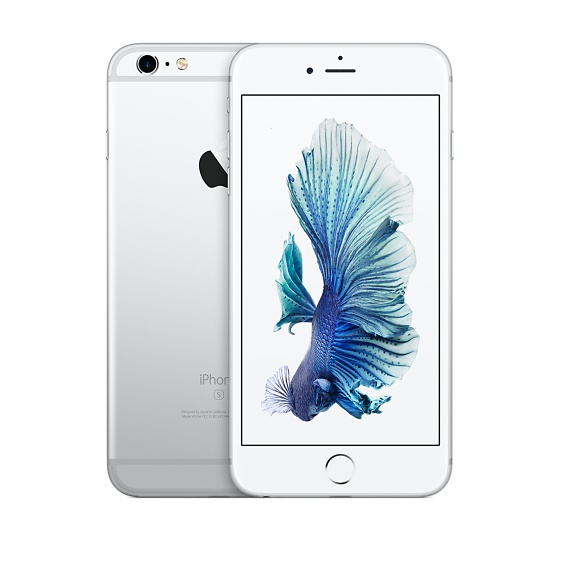


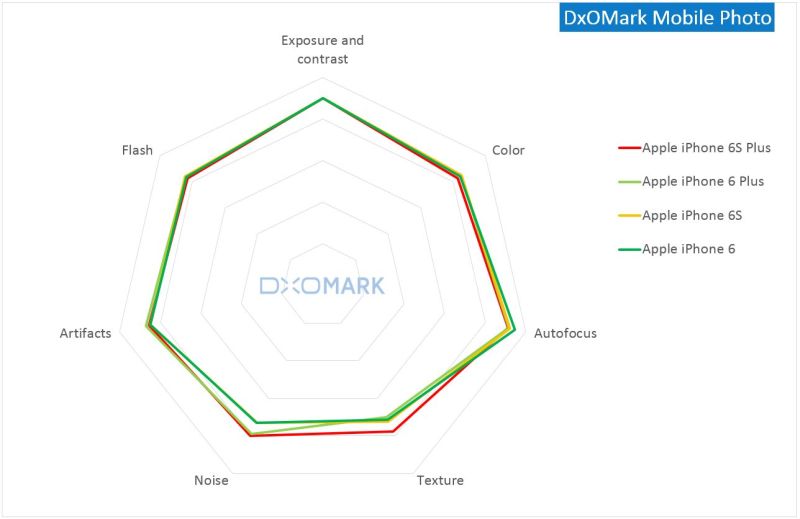
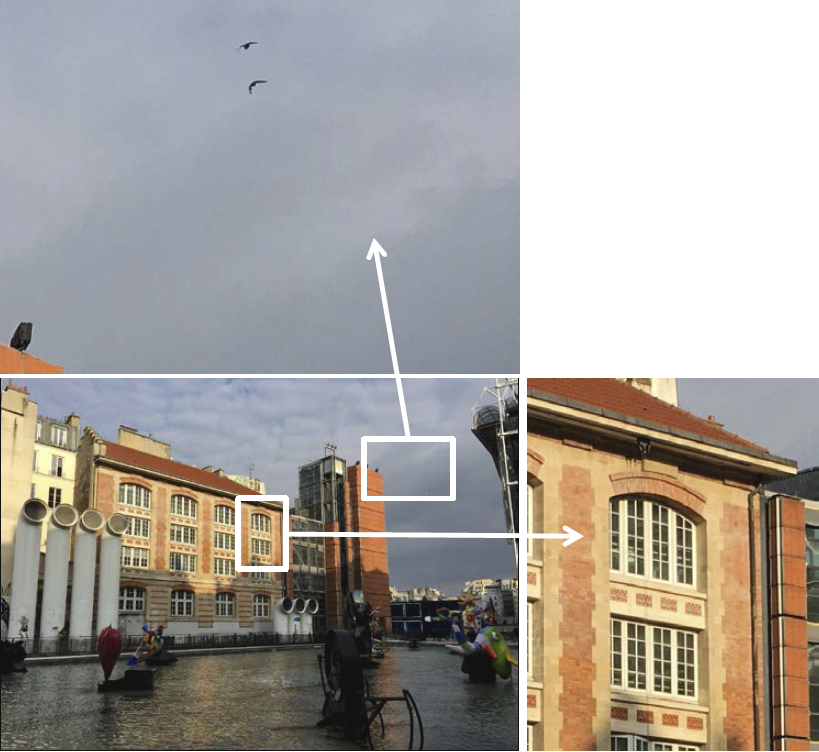
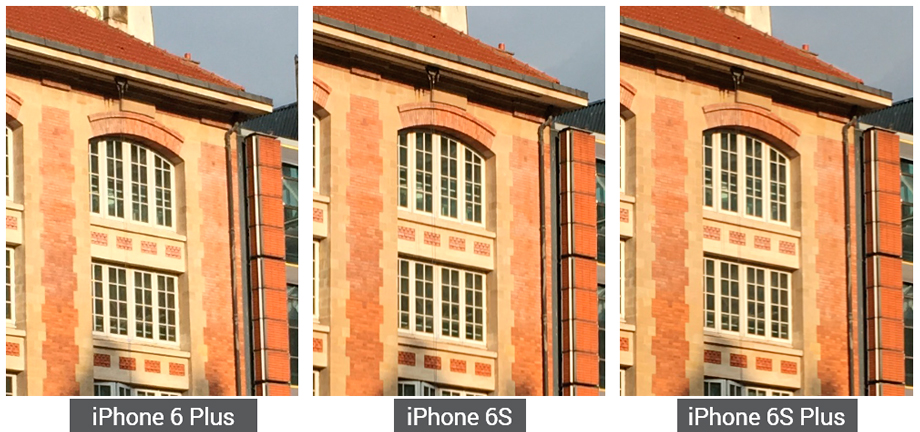
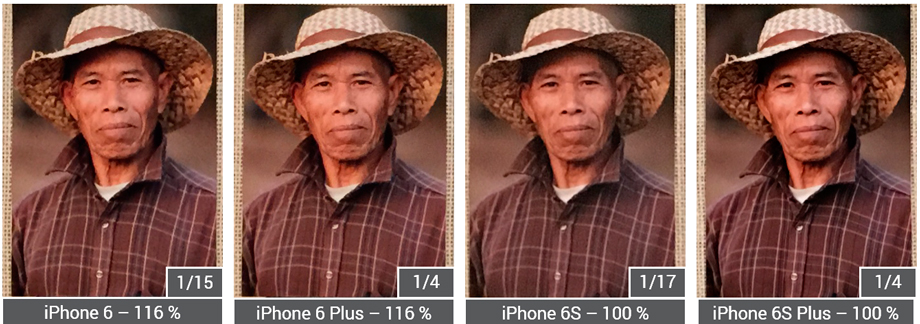

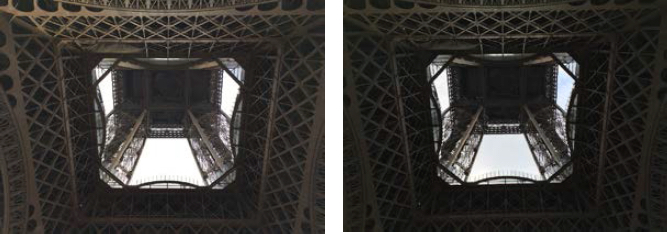
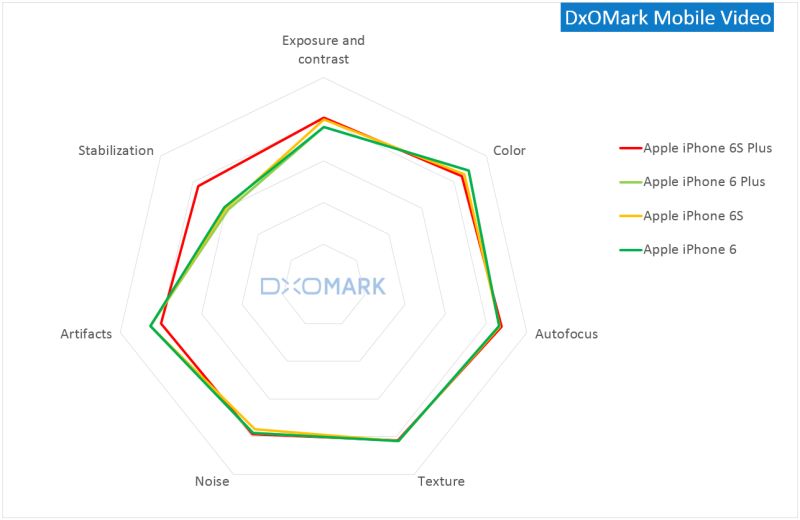
DXOMARK encourages its readers to share comments on the articles. To read or post comments, Disqus cookies are required. Change your Cookies Preferences and read more about our Comment Policy.